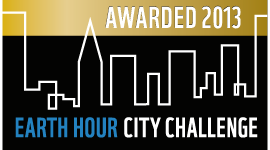Forlì sustainability
Posted on November, 12 2013
Managing the shift to a carbon free economy
Managing the shift to a carbon free economy
Forlì, Italy, one of the finalists in WWF’s Earth Hour City Challenge 2013, has an ambitious and credible climate action plan targeting a 25% reduction of city-wide carbon dioxide emissions by 2020. Forlì has engaged the public in many of its projects and is prioritizing solar installations, energy reclassification of buildings, renovation of schools, waste management improvements, development of local district heating systems, construction of cycle lanes, and more efficient and stronger communications campaigns.
Keywords: Climate action plan, solar energy, energy efficiency, modal shift, LED
Forlì is a typical medium-sized town (116,000) in the Po River Valley in the Emilia-Romagna region (see also Vitoria-Gasteiz). Its size means that it can serve as a strong example for other medium-sized cities because, according to the UN, it is in cities with 100,000 to 250,000 inhabitants that most of the world’s urban growth is taking place. Around half the population of Europe lives in medium-sized cities, compared with a quarter of the population who live in major cities.
The vision of Forlì's Sustainable Energy Action Plan, is to manage the shift towards a carbon-free energy economy by lifestyle changes, sustainable development and planning, and a sustainable city governance. The first goal is a 25% reduction in carbon dioxide emissions by 2020, which will come from four key areas: installation of renewable energy sources (27.5%), energy efficiency (20%), efficient and sustainable services (34.5%) and a modal shift (18%).
Investments in renewables
Forlì invests in a broad range of renewable energy sources such as solar, biomass, geothermal energy and a biogas plant for biodegradable waste. Solar PVs have been installed on public buildings such as schools, kindergartens, bus terminals, and stadiums as well as on private buildings. District heating systems with renewable sources are also under development.
The city has targeted energy efficiency savings from renovation of public buildings, including their heating systems, electricity and lighting; a program for urban renewal that includes support for private building retrofits; and a program for small combined heat and power plants (CHP) for apartment blocks. The city has also created incentives for private renovations through, for example, energy declaration schemes for houses.
To improve its own services, the city is reducing waste for incineration, developing a city-wide district heating system, installing LEDs for traffic and street lighting and enlarging green areas. Improved waste management had already led to a 70% degree of waste separation in 2011.
Concerning sustainable mobility, the city has developed a mobility master plan that integrates sustainable transportation, through investments in cycle lanes, bike sharing, car sharing and new bus routes.
Constraints and priorities
The city government has faced some barriers and constraints in implementing its climate action plan such as limited financial resources, weak energy management, limited knowledge of new technologies and bureaucratic procedures. Some key priorities identified by the government are solar installations, energy reclassification of buildings, renovation of schools, improvements in waste management, development of local district heating systems, construction of cycle lanes, and more efficient and stronger communications campaigns.
Forlì's government has an ambitious outreach program, engaging schools and residents in various projects. One example is the European Green Night of Forlì, a special annual event aimed at raising awareness among citizens on energy, environment and sustainable development, with debates and workshops, presentations, art and sports performances, and tasting of organic food and "zero kilometer" products.
References:
Worldwide Fund for Nature, ”Earth Hour City Challenge 2013”, http://wwf.panda.org/what_we_do/footprint/cities/earth_hour_city_challenge/challenge_2013/
Earth Hour City Challenge, People’s Choice, Forlì, http://www.ehcitychallenge.org/peopleschoice/city/forli
carbonn Cities Climate Registry, Earth Hour City Challenge, http://citiesclimateregistry.org/cities/earth-hour-city-challenge/
Municipality of Forlì, "Sustainable energy planning", http://awsassets.panda.org/downloads/ehcc_forli.pdf
The Covenant of Mayors, "The Covenant of Mayors and the energy planning in the city of Forlì", http://www.renewal-ujszilvas.eu/Events/Docs/Forli_eng.pdf
Emilia Romagna Turismo, "The European Green Night of Forlì", may 2012, http://www.emiliaromagnaturismo.com/en/events/forli-cesena/multiple-events/la-notte-verde-europea-di-forl-204/details?ID=14806&NPAGE=1&ISFREE=ON&FREEFIND=notte+verde
Text by: Martin Jacobson







